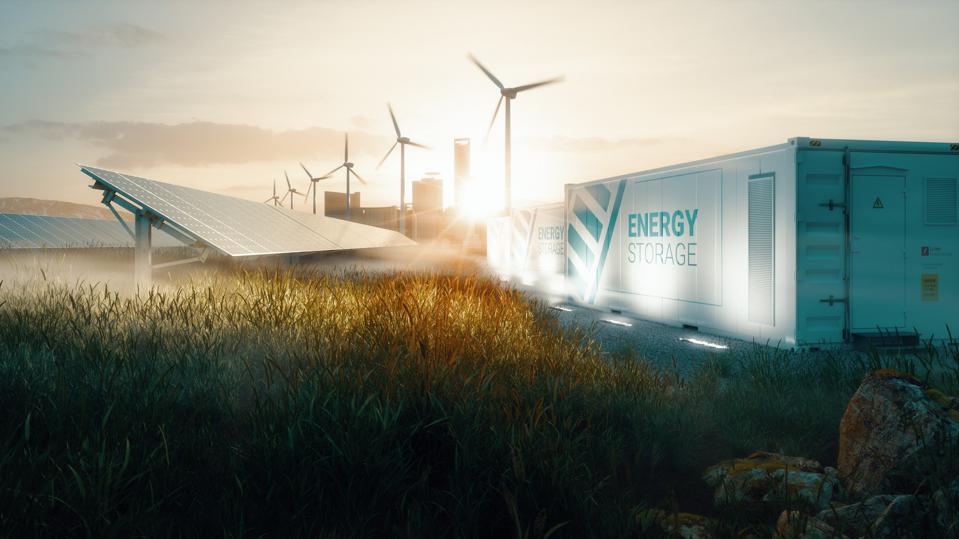Today, nearly everyone accepts that in order to slow the damage we are doing to our planet and environment, humans must transition away from the use of fossil fuels. This has led to many science and business innovations as we search for new sustainable or renewable alternatives to coal, oil, and gas.
Copyright: forbes.com – “The Five Biggest New Energy Trends In 2022”
 Although it would be nice to think everyone wants to do their part in order to save the world, there are strong financial incentives too. The value of the renewable energy market is set to grow from $880 billion to nearly $2 trillion by 2030. And the growing awareness of the importance of environmental and social governance (ESG) issues means there are tremendous political incentives, too.
Although it would be nice to think everyone wants to do their part in order to save the world, there are strong financial incentives too. The value of the renewable energy market is set to grow from $880 billion to nearly $2 trillion by 2030. And the growing awareness of the importance of environmental and social governance (ESG) issues means there are tremendous political incentives, too.
2022 is set to be a record year in terms of the scale at which the switchover from fossil fuels to renewable sources will take place. It’s also a year in which we will see new and exotic sources of energy emerge from laboratory and pilot projects and start to become a part of everyday life. So let’s take a look at what is predicted to be some of the most impactful trends in the new energy sector over the next 12 months…
AI in the energy sector
As with every sector, artificial intelligence (AI) is having transformative effects across energy and utilities. It is used to forecast demand and manage the distribution of resources, to ensure that power is available at the time and place it’s needed with a minimum of waste. This is particularly important in the renewable energy industry, where it often can’t be stored for long periods of time and has to be used close to the time and location where it is generated.
The World Economic Forum predicts that AI will play an essential role in the world’s transition to clean energy. These gains in efficiency will be created by more accurate forecasting of supply and demand. Additionally, a switch is taking place away from centralized models of power generation and distribution towards decentralized models, where more power is generated by smaller, localized power grids (for example, solar farms) and coordinating the integration of these networks requires complex AI algorithms. The strategy here is to create an “intelligent coordination layer” that sits between the power infrastructure and homes and businesses where power is consumed. […]
Read more: www.forbes.com
Thank you for reading this post, don't forget to subscribe to our AI NAVIGATOR!


Today, nearly everyone accepts that in order to slow the damage we are doing to our planet and environment, humans must transition away from the use of fossil fuels. This has led to many science and business innovations as we search for new sustainable or renewable alternatives to coal, oil, and gas.
Copyright: forbes.com – “The Five Biggest New Energy Trends In 2022”
2022 is set to be a record year in terms of the scale at which the switchover from fossil fuels to renewable sources will take place. It’s also a year in which we will see new and exotic sources of energy emerge from laboratory and pilot projects and start to become a part of everyday life. So let’s take a look at what is predicted to be some of the most impactful trends in the new energy sector over the next 12 months…
AI in the energy sector
As with every sector, artificial intelligence (AI) is having transformative effects across energy and utilities. It is used to forecast demand and manage the distribution of resources, to ensure that power is available at the time and place it’s needed with a minimum of waste. This is particularly important in the renewable energy industry, where it often can’t be stored for long periods of time and has to be used close to the time and location where it is generated.
The World Economic Forum predicts that AI will play an essential role in the world’s transition to clean energy. These gains in efficiency will be created by more accurate forecasting of supply and demand. Additionally, a switch is taking place away from centralized models of power generation and distribution towards decentralized models, where more power is generated by smaller, localized power grids (for example, solar farms) and coordinating the integration of these networks requires complex AI algorithms. The strategy here is to create an “intelligent coordination layer” that sits between the power infrastructure and homes and businesses where power is consumed. […]
Read more: www.forbes.com
Thank you for reading this post, don't forget to subscribe to our AI NAVIGATOR!
Share this: